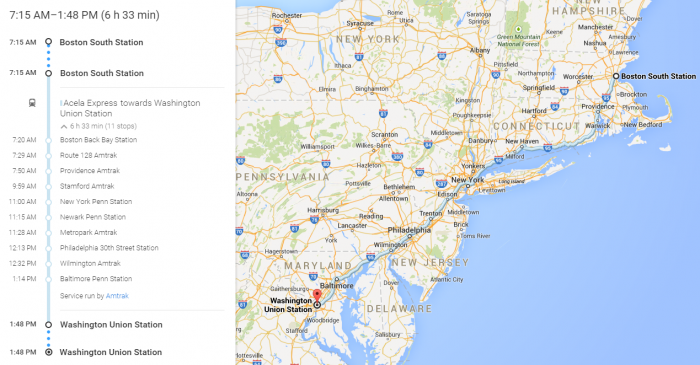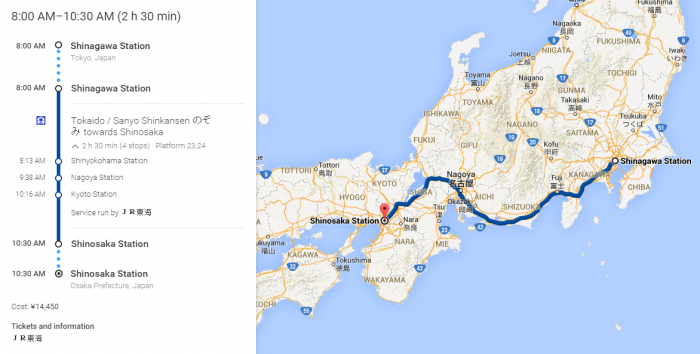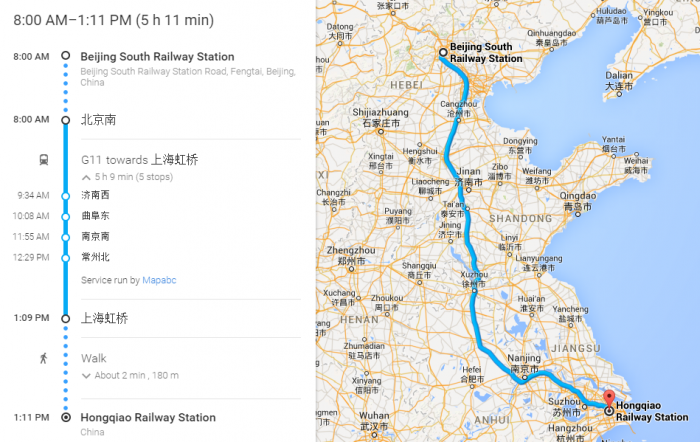 Amtrak got a bipartisan nod of approval in Washington last week in the form of the Passenger Rail Reform and Investment Act of 2015 (H.R. 749), which authorizes $7.2 billion in federal subsidies for Amtrak and other rail programs through 2019, including $1.7 billion a year over four years.
Amtrak got a bipartisan nod of approval in Washington last week in the form of the Passenger Rail Reform and Investment Act of 2015 (H.R. 749), which authorizes $7.2 billion in federal subsidies for Amtrak and other rail programs through 2019, including $1.7 billion a year over four years.
While it’s not the boost in funding needed to match ridership gains, it could be considered a win in this congress. The vote was 316 to 101—with all Democrats who voted being in favor, and the conservative contingent casting against. A last minute action alert from conservative groups—Heritage Action and Club for Growth—called, unsuccessfully, for a no vote, identifying this as a “key vote” against which legislators’ performance would be judged. Given that Democratic votes were needed for passage, even the usual attempts to privatize and defund the system were unsuccessful.
There were several bits of policy reform of note:
- Local officials in the 19 states that contribute financially to Amtrak service would have “a seat at the table” on decisions relating to changes and budgets for service.
- Amtrak would need to be more transparent with the financial information it provides to state and local governments.
- There will be some “streamlining” of environmental and other regulations on construction projects.
- Amtrak will need to address the operating losses for food service on trains.
- A pilot program will be launched allowing pets on board, for a fee.
- A requirement that Amtrak take “a hard look” at the access needs of wheelchair users, bicyclists and other non-motorized transportation.
- Profit from the Northeast Corridor (NEC), which usually subsidizes unprofitable routes across the country, would be reinvested in the corridor.
This final bullet can’t be overlooked, as it could ultimately lead to faster service. A feasibility study must be completed in six months that will analyze the possibility of a new and better Northeast Corridor.
The NEC connects five of the largest 20 metropolitan regions (total metro pop. ≈ 40 million) generating $3 trillion in economic activity each year. Amtrak runs a Northeast Corridor local service, as well as “high-speed” Acela Express service between Boston and Washington. The Acela Express trains are the fastest in Amtrak’s fleet, but in global terms, they’re actually quite slow. Average speed on the line (including stops) is just over 65 mph for the 435-mile trip from Boston to Washington, DC. This is not a speed suited for a mega-region that generates one-fifth of the nation’s GDP.
Here is how travel times on the Northeast Corridor’s Acela Express compare to other high-speed routes between major metro areas:

If rails on the Northeast Corridor were upgraded for high speed trains, like what they have in Japan and China, travel time between Boston and Washington could be cut in half. In Japan, for example, the 311-mile trip from Tokyo to Osaka takes two hours 19 mins — with trains running at an average speed of roughly 135 miles per hour.

In China, the 745-mile trip from Beijing to Shanghai takes five hours and 11 minutes. That’s an average speed of 144 mph.

Both routes have at least three intermediate stops and have an average speed of about 140 mph. At that speed, the trip from DC to Boston with intermediate stops in Baltimore, Philadelphia, New York and yes, even Connecticut, could be done in about three hours and 30 minutes.
President Obama has voiced his support for the bill. Now, it awaits Senate debate and approval.

[…] on the Network today: Tri-State Transportation Campaign’s Mobilizing the Region blog explains the optimism over new rules governing Amtrak’s Northeast Corridor that […]
[…] on the Network today: Tri-State Transportation Campaign’s Mobilizing the Region blog explains the optimism over new rules governing Amtrak’s Northeast Corridor that […]
You have billions that are needed to replace failing large and small bridges along the entire NEC that where built before the PRR ere along with the entire overhead wires and power structure that was built in the 1930’s and failing more frequently every week. Spare me the hsr stuff. This will never happen until the entire system is rebuilt from the ground up
What kind of outreach has been or will be done to secure a high-speed rail connection between New York City and Toronto, by way of Niagara Falls, Buffalo, Rochester, and perhaps Syracuse? Much to the incredulity of lay people and advocates for rail transportation in Upstate New York, New York State’s ongoing high speed rail study does not take into account the existence of Toronto – even though, as Lloyd Alter writes in June 2014, “Upper New York State…is part of a population cluster of immense power and productivity.” He cites renowned author Richard Florida “on the possible economic engine that could be Toronto, Buffalo and Rochester:
Tor-Buff-Chester is bigger than the San Francisco-Silicon Valley mega-region, Greater Paris, Hong Kong and Shanghai, and more than twice the size of Cascadia, which stretches from Vancouver to Seattle and Portland. Its economic might is equivalent to more than half of all of Canada’s. If it were its own country, it would number among the 16 biggest in the world, with economic output bigger than that of Sweden, the Netherlands, or Australia.”
It is mind-boggling that a study to send high speed rail upstate from New York City would not aim for Toronto, nor consider by-passing the twists and turns of the Hudson Valley and its myriad commuter stops in order to achieve a high-speed, short-time connection between 2 of North America’s largest megalopolises.
[…] Senator Richard Blumenthal & acting Federal Railway Administrator Sarah Feinberg — The Northeast Corridor high speed rail study that has been irking Connecticut officials for weeks has been declared “dead on […]
I just returned from NYC. Penn Station to Buffalo 1:20 P.M. to 10:00 P.M. My friends from Toronto drove to Buffalo to take the train. The freight train traffic continued to delay our movement.